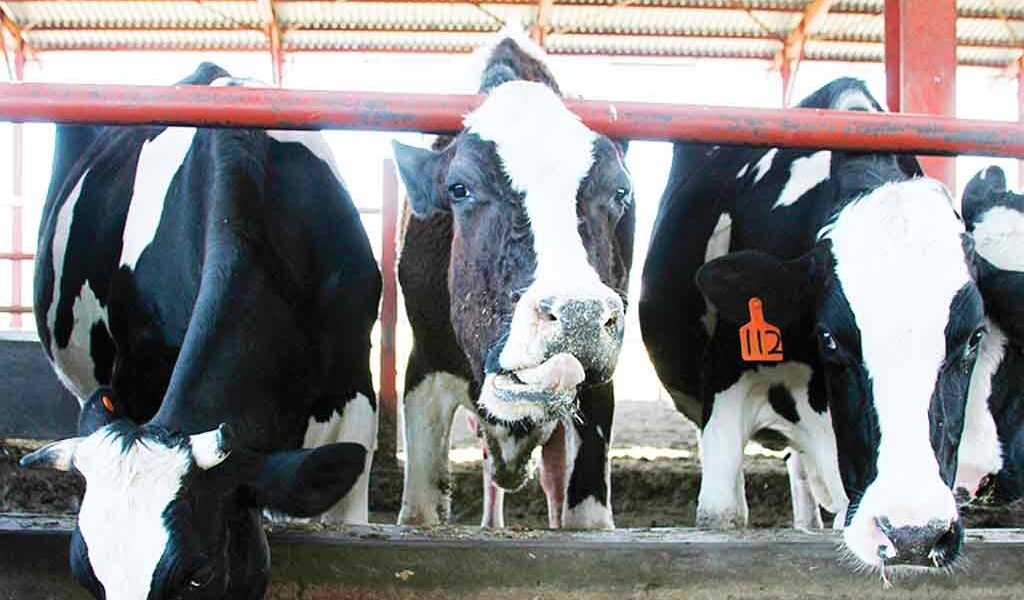Roman Grynberg
In 2013, South Africa gave notice to Namibia that it was going to impose what it claimed were internationally recognized standards on the huge and long standing trade in live cattle from Namibia.
Namibia has long exported millions of dollars of live cattle to South Africa for fattening in feedlots and for slaughter at abattoirs. For many it seemed at the time that South Africa could not be serious and that the new standards were such that Namibia could not possibly comply and that South Africa would kill off a trade that had gone on for decades and was mutually beneficial for both. After all Namibia’s exports provided South African feedlots with more cattle and increased profits while Namibia exported weaners which put relatively little environmental pressure on the Kalahari veld. It was possible for Namibia to have a much larger herd than if we were to feed these cattle ourselves or to import fodder from abroad for feedlots because such weaners consume feed rather than grass.
Then suddenly South Africa pulled the plug on this trade by imposing much higher standards on cattle coming from Namibia than on its own. It required Namibian cattle arriving in South Africa to be certified that they were free from Bovine Tuberculosis, Bovine Brucellosis, that they be treated against internal and external parasites as well as vaccinated against Infectious Bovine Rhinotracheitis and Anthrax. None of this was required of South African cattle and South Africa still needs to explain the scientific foundation for applying much higher standards on cattle from Namibia than domestic cattle. In 2014, South Africa imported some US$48 million (N$50 million ) of cattle, sheep and goats, almost entirely from Namibia.
So then why was South Africa so anxious to destroy a mutually beneficial trade that had existed since long before independence? The obvious response is that it is not beneficial for everyone. It is said that in international commerce there are two reasons for every action – there is the good reason and then there is real reason. The good reason is that South Africa wanted to bring its trade in beef into conformity with international standards of the International Office of Epizootics which is the Paris based organization which writes the book of live animal and products standards. But that begs the question of why now?
The real reason for Pretoria’s actions are far more complex and subject to considerable debate. There are at least two competing reasons commonly posited for why South Africa decided to impose these standards now. The first is that the South African beef farmers simply wanted higher prices and by restricting imports from Namibia the supply of beef would decrease and prices would rise. Beef farmers are never known for their generosity towards consumers nor to their foresight of its actions. The Red Meat Producers Organization lobbied the government of South Africa for these measures and Pretoria agreed to impose these fairly draconian measures on its close ally and neighbor Namibia.
This then raises the question of why the government of South Africa would agree to these measures when they knew it would hurt Namibia. The answer is unclear but trade experts suspect that the underlying cause is that Pretoria is becoming more and more annoyed with the restrictions that are imposed by the smaller SACU members including Namibia on the imports of South African poultry and milk and that this is merely a retaliatory measure. As far as this hypothesis goes, it cannot be a retaliatory measure if no-one in Windhoek is quite sure why it is being done.
There is the increasing view that this is all a minor matter that largely effects the large white farmers. According to Dr Anja Boshoff – de Witt, the Manager of Standards at the Namibian Meat Board, 60% of the live cattle trade comes from the communal areas and as result the decrease in the trade will effect the livelihoods of many low income Namibians. Moreover in 2014 farmers were receiving prices in South Africa that were reportedly 20% higher than in Namibia for the 160,000 animals that were exported in that year.
In March 2016 Namibia took the entire matter to the WTO, an unprecedented measure in Africa for two close neighbours that are both members of SACU, the customs union that should deal with such regional disputes. But SACU is a crippled organization which has what it needs on paper but has no functioning institutions to deal with this sort of a dispute or any other dispute for that matter. The last 2002 agreement was supposed to have a host of committees and agencies and in fact there was an Agricultural Liaison Committee in SACU but it ceased to function in 2010.
In July this year, following high level consultations, the media in Namibia proudly announced that there had been a concession from South Africa. As a result there is the commonly held view that the matter is now resolved and nothing could be further from the truth. This South African concession was not for weaners and was only for cattle going straight for slaughter which is a very small minority of the total volume of cattle exports. The trade figures speak for themselves. During July 2016, only 2 cattle were exported as opposed to 24 720 in the same month 2015. During August 2016, 153 cattle were exported as opposed to 33 658 in the same month 2015. The government needs to act to come to an agreement with South Africa on the weaner trade as it is the rural Namibian farmers living in the communal areas who are paying the price of what is almost certainly a trade war fought by regulation.
These are the views of Professor Roman Grynberg and not necessarily UNAM where he is employed.

